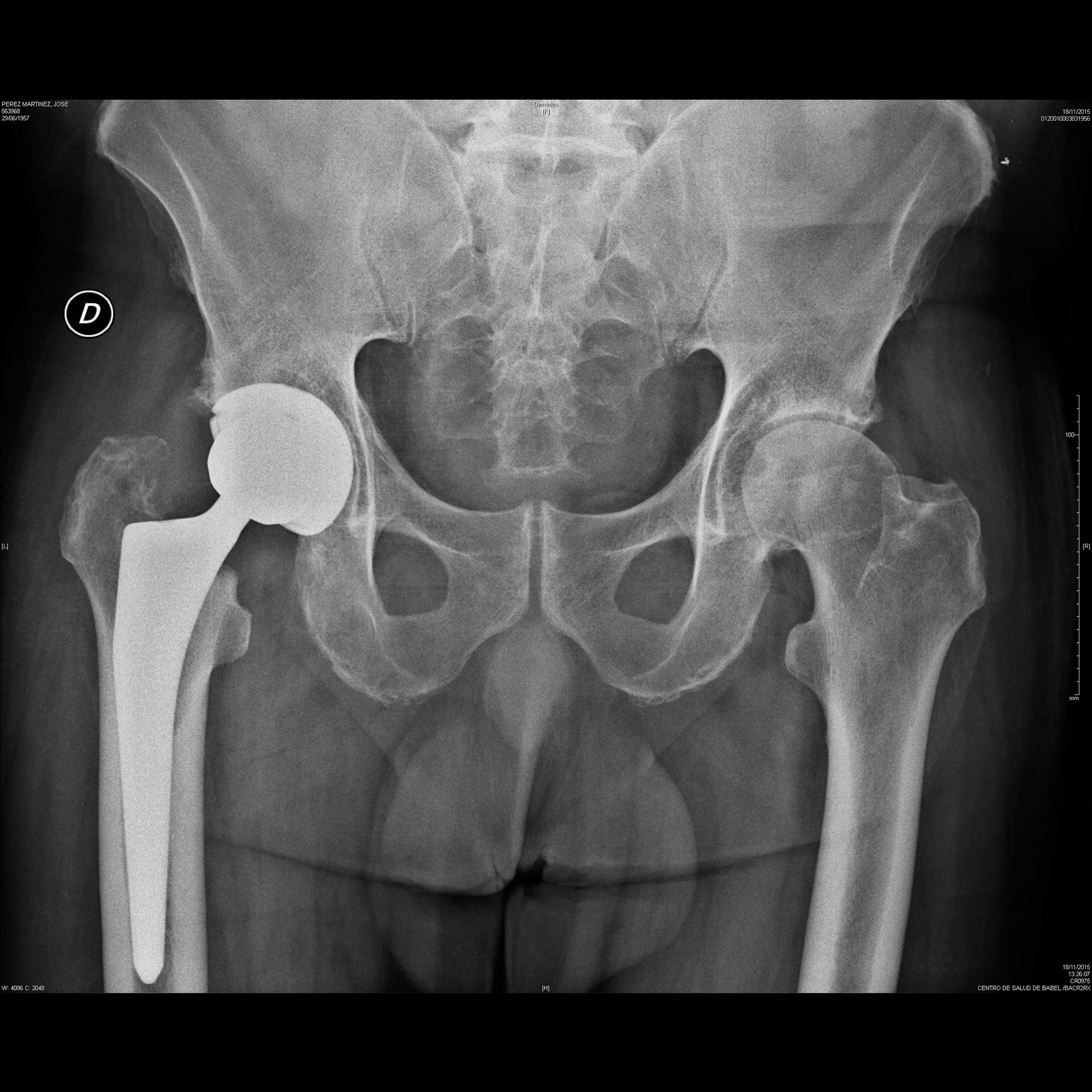What is a Total Hip Replacement?
It is the surgical replacement of the hip joint with an artificial one which consists of a component in the pelvis as a bowl-shaped cup, hemispherical and another component that replaces or covers the femoral head and which articulates with the previous one. This results in a new joint with minimal friction allowing the patient to regain mobility without pain. The prostheses are made of various metal alloys (chromium, cobalt, molybdenum, titanium ...), and in some cases, high molecular weight polyethylene and various ceramics. The choice of prosthesis depends on several factors such as patient age, activity level, and others.
What happens during Hip Replacement Surgery?
Hip replacement surgery can be performed in two to four hours, depending on the condition of your hip arthritis. A drainage tube will be likely placed in your bladder to help you go to the bathroom allowed for one or two days. In the operated leg a compression stocking will be placed.
The surgery is performed through an incision over the side of the hip. A ball-shaped bone (femoral head) at the top end of the thighbone (femur) is cut and replaced with a new metal dome and the stem. The hip joint can be stabilized with or without cement.
The damaged surface of the acetabulum is smoothed in preparation for the insertion of the new socket. Upon inserting the prosthesis into the central core of the femur, it is fixed with a bony cement, and the top and the acetabulum are joined. When the surgeon is satisfied with the fit and function, the incision will be cleaned and covered with bandages. A drain may be put in to help drain any fluid.
After surgery, you will be moved to the recovery room where you will remain for your recovery from anesthesia. A nurse will stay with you and in order to avoid lung congestion, you will be asked to breathe deeply and cough frequently..
You will also be given pain medication and find a pillow or foam wedge placed between your legs to help keep your joint in place. When you regain consciousness, you will be transferred to your hospital room.
What will it be like for the patient after surgery?
When you return to your hospital room, a moderate rehabilitation program will begin, to help strengthen the muscles around your new hip and regain your range of motion. Aftert 48 hours from surgery you may be asked to sit on the edge of the bed with feet dangling. The physical therapist will teach you how to protect your new hip while doing daily activities.
As soon as possible, usually within 48 hours, the nurses will encourage you to start walking a few steps. Then you will start walking with the help of a walker support of the hips and then with a cane. Before being discharged from the hospital, you should learn how to perform daily tasks at home with your new hip.
For example, they will teach you how to use the bathroom, how to dress and the same when sitting or standing, and pick up objects and many other things. After two to four days have passed, or when your surgeon determine that you have recovered enough, you will be discharged from the hospital.
Once back home, continue taking the medication and continue exercising as your surgeon or physical therapist have recommended. Walking, remaining active and practicing the required exercises are the quickest way to full recovery.
How long will a joint replacement last?.
The longevity of the prosthetic hip varies from patient to patient. It depends on many factors, such as a patient's physical condition, activity level, and weight, as well as the accuracy of implant placement during surgery. It is useful to keep in mind that prosthetic joints are not as strong or durable as a natural, healthy joint, and there is no guarantee that a prosthetic joint will last the rest of a patient's life. .
You can also download the Informed Consent from the official website of the SECOT, Sociedad Española de Cirugía Ortopédica y Traumatología




